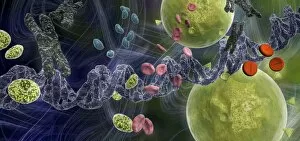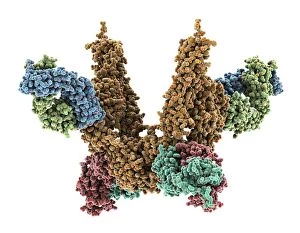Tyrosine Kinase Collection
"Unlocking the Potential of Tyrosine Kinase
All Professionally Made to Order for Quick Shipping
"Unlocking the Potential of Tyrosine Kinase: Exploring Cabozantinib Cancer Drug F007/0121 and its Impact on Src and Insulin Receptor Molecules" In the realm of cancer research, it has emerged as a promising target for therapeutic interventions. One such breakthrough is seen in the remarkable efficacy of Cabozantinib cancer drug F007/0121, which holds immense potential in combating various forms of cancer. The first step towards understanding this groundbreaking drug lies in unraveling its intricate mechanism. By inhibiting tyrosine kinase activity, Cabozantinib disrupts tumor growth signals, effectively impeding their progression. This molecular marvel not only targets specific proteins like Src protein molecule F006/9646 but also acts upon insulin receptor molecules (F006/9581) to regulate glucose metabolism. Further advancements have been made with GNF-2 kinase inhibitor, another potent molecule that binds to tyrosine kinases, preventing them from initiating cancerous processes. Its molecular model showcases the precision with which it interacts within cellular pathways. As we delve deeper into exploring these inhibitors' effects on viruses (conceptual image C016/6253), we witness their potential beyond just treating cancer. The ability to hinder viral replication opens new doors for antiviral therapies and offers hope against infectious diseases plaguing humanity. Continuing our journey through the world modulation brings us back to insulin receptor molecules (C015/9405 & C015/9411). These vital components play a pivotal role in regulating blood sugar levels and hold promise for managing diabetes more effectively by targeting this pathway. Furthermore, epidermal growth factor molecules (C015/5925 & C015/5924) come under scrutiny as they interact with tyrosine kinases involved in cell proliferation and survival signaling pathways. Understanding these interactions may pave the way for novel treatments against diseases like cancer and autoimmune disorders.













